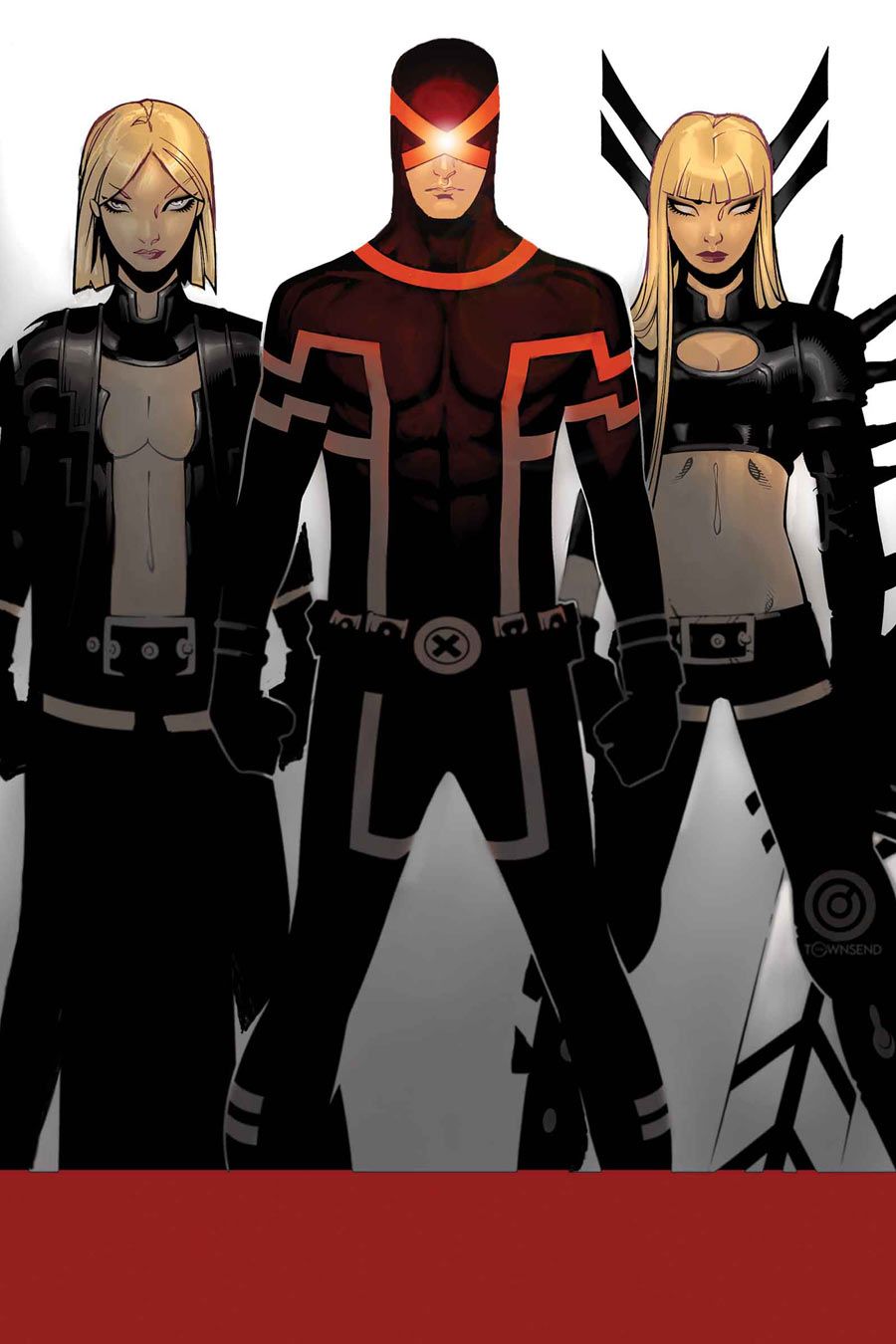Brian Michael Bendis and Chris Bachalo's "Uncanny X-Men" #20 feels like that sort of unimpressive middle bit of a story that you sometimes just have to wade through before you can get to something really good. Fortunately Bachalo's strong visuals make even a boring middle bit fairly enjoyable.
Bendis' strength with "Uncanny X-Men" has most certainly been the new mutants and more specifically the contrast between their experiences as naïve new X-Men in a violent world and those of hardened leader Scott Summers. When the book draws too far away from these elements, it tends to lose focus. The Maria Hill plot points work best when tied closely to Scott Summers, as it is for half of this book, but when the story retreats to the Maria Hill and Dazzler/Mystique-as-Dazzler elements and Mystique's set-up in Madripoor, the book loses steam. It becomes unfocused, less believable and less engaging when the story pulls away too far from the new Mutants and their disturbingly dark teachers (Scott, Emma and Magik).
As a result, about half of this book works really well as it touches on the Cuckoos violating Maria Hill's mind, the debate back at home base, and Scott and Magik going to confront modern-day Hank McCoy. The rest of the book kind of flounders helplessly. I know Bendis has to keep those balls in the air for future plotlines, but it's hard to enjoy in comparison.
Bachalo's interiors continue to shine. Working, as usual with an army of inkers (Tim Townsend, Wayne Faucher, Jon Holdredge, Jaime Mendoza, Victor Olazaba and Al Vey) and coloring his own work, Bachalo is remarkably strong when it comes to character design, character acting, evocative colors and exciting visuals, even when those visuals are just people arguing, which makes up the bulk of this issue. Bachalo moves through scenes like a gifted cinematographer, making smart choices that keep readers engaged where in lesser hands there would be little to be engaged with. When Bachalo drops out backgrounds or color, or uses white space, or shifts colors to a one color wash, it's no accident. He does it with beautiful purpose, to highlight a moment, slow down a scene, draw attention or clarify storytelling. His color palette is especially stunning as it shifts from "normal" at S.H.I.E.L.D. headquarters to monochromatic blue inside Cerebro and bathed in gold as Magik teleports. It's gorgeous stuff.
All that said, there are some moments that could be clearer in their execution. Bendis' story intent is definitely lacking clarity in places, but Bachalo doesn't clear things up, which is unusual. A scene in which Maria Hill and Mystique as Dazzler talk focuses on someone else entirely and the significance is not easily understood. Similarly, a scene in which Maria Hill's mind appears hijacked by Cyclops and the Cuckoos seems brilliant thanks to Bachalo's clever use of color and layout, but becomes unclear in what exactly has happened -- there appear to be two reveals in the scene but the second's intent is lost. The final panels with Cyclops apparently losing control of his powers is also a bit confusing. Regardless, it's unfortunate to have any lack of clarity, as the book is straight up beautiful.
All in all, "Uncanny X-Men" is an interesting book with stunning visuals. This issue is not "Uncanny X-Men" at its best, but thanks to beautiful art, it's still a reasonably enjoyable installment.

